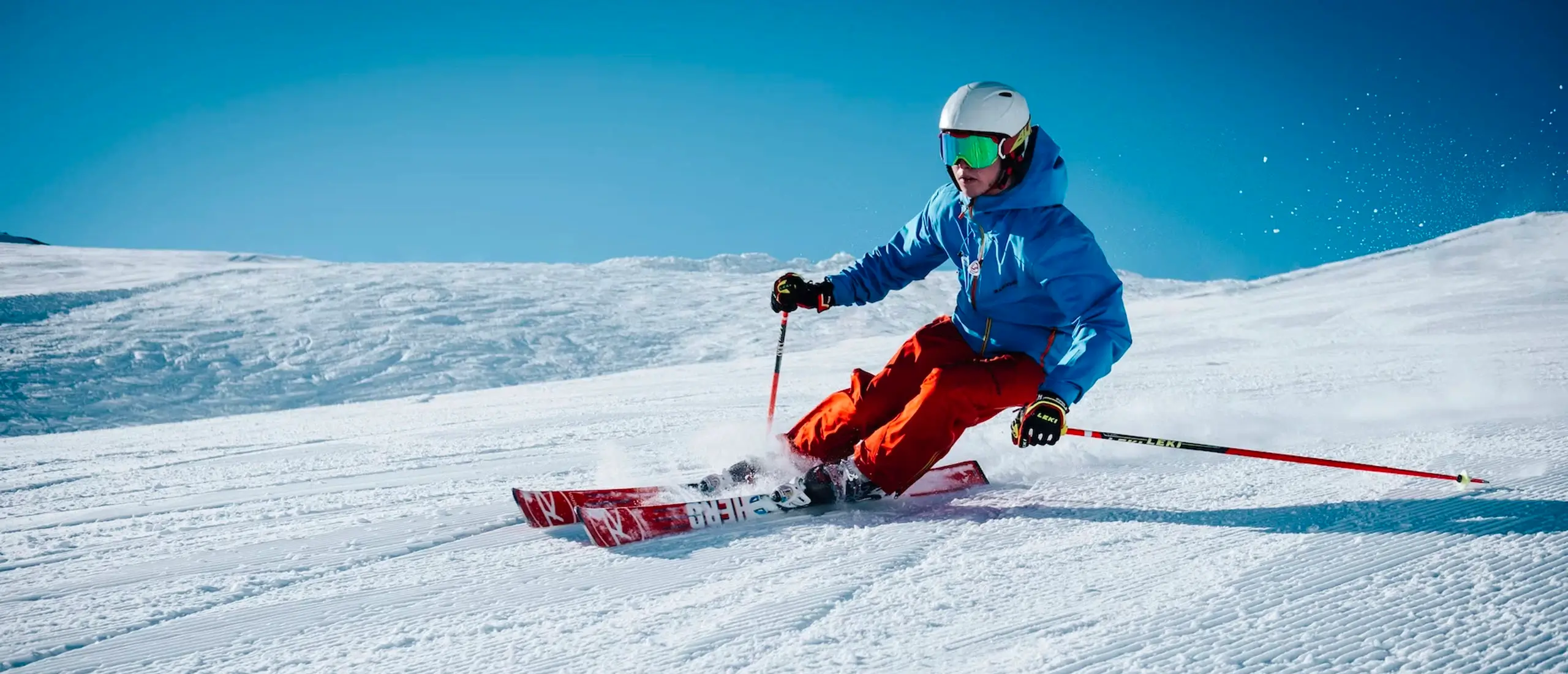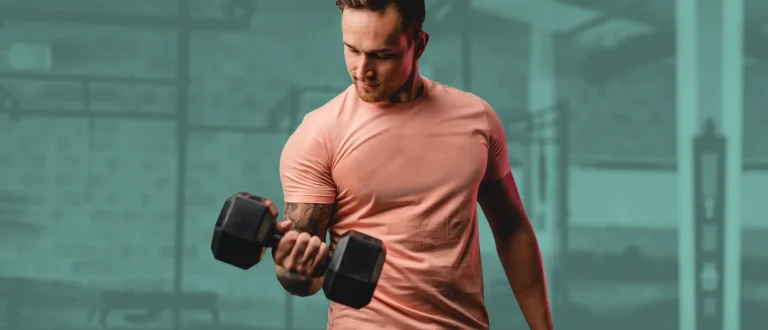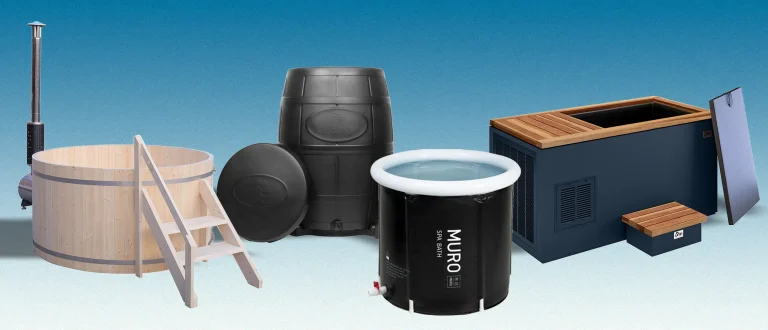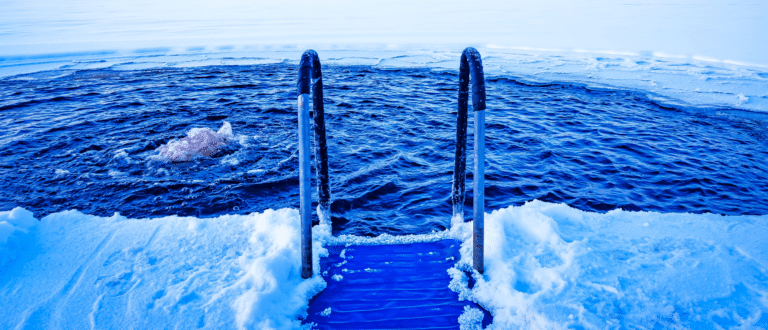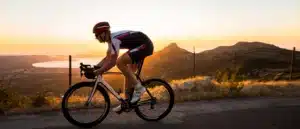How Many Calories Do You Really Burn Skiing?
After a long day on the slopes, you’re ready to tip back a couple of beers and an extra helping of fondue. Whether you bombed down the steeps or pizza-sliced the bunny hill you’re sore, stiff, and exhausted.
You deserve a little extra at the bar, right? Well, it depends.
Exactly how many calories you burn skiing is based on your intensity, weight, and the type of skiing you’re participating in (i.e. downhill skiing vs. cross-country skiing—yes, there’s a big difference). But, there are things you can do to burn more. Here’s the scoop.
How Many Calories Does Skiing Burn?
The amount of calories that can potentially be burned while skiing relies on factors such as the intensity of your training, your body weight, your ski type, and even the terrain you’re on.
The catch? The numbers don’t include the time spent on the chairlift; it’s only time spent skiing that counts. To more accurately estimate calories burned in a full day of stop-and-go, get an activity tracker and keep it running the whole time you’re on the slopes.
You can also up the number of calories burned by increasing your intensity or choosing a more difficult run. Hitting the moguls will burn more calories than cruising the groomers. Further, calorie burn while skiing is broken down into the two major ski categories—downhill and cross-country—where one is clearly superior to the other for calorie burn.
Downhill skiing
According to data from the Compendium of Physical Activities—a research-backed list of how many calories are burned by different activities—a 150-pound downhill skier will burn an average of 360 calories per hour at a moderate intensity. A 180-pound skier will burn about 434 calories, and a 200-pound skier: 482.
Cross-country skiing
Cross-country skiing, however, burns a lot of calories. Elite cross-country skiers can burn off a chipotle burrito (upwards of 1300 calories) in as little as one hour. For the rest of us, the count is a little lower but still significant.
A 150-pound skier will burn 614 calories per hour of skiing at a moderate pace of 4.0 to 4.9 miles per hour. At the same speed, a 180-pound skier can expect to burn about 736 calories per hour, and a 200-pound skier: a whopping 818 calories.
Is Skiing Good for Weight Loss?
Any activity where you burn calories can help you lose weight, and skiing is one of them. Just don’t assume one day on the slopes is a solution for a beer belly. To lose weight, you’ll need to consistently achieve a caloric deficit, which can be accomplished through methods like dieting, intermittent fasting, and regular exercise.
The point: if you aren’t consistently skiing, it won’t do much for your weight loss goals. If you’re looking for real results plan to ski regularly (think: three to four times per week), or incorporate it into a well-rounded routine designed with weight loss in mind.
Is Skiing a Good Workout?
Yes. Skiing is a great low-impact workout. It decreases the wear and tear on your joints while providing a mix of endurance and resistance training. According to research published in the Journal of Sports Science and Medicine, all types of skiing (downhill and cross-country included) offer cardio-metabolic benefits, including improved insulin resistance, body composition, and glucose metabolism, as well as a drop in blood pressure, blood lipids, and resting heart rate (1).
Downhill skiing is a form of interval training; after pushing yourself down a run, you get a nice break as you ride back up the hill. A growing body of evidence suggests exercise involving hard blocks of work, sandwiched between intervals of rest can extend your lifespan (2), and improve your fitness level (3).
Does Skiing Burn More Calories Than Snowboarding?
Snowboarding is another high-intensity winter workout option that can help you burn calories. There’s no research that pits the slope sports against each other (at least not that we’ve seen), but the non-profit Snowsports Industries America estimates that skiing burns 500 calories an hour, while snowboarding is just shy of that at 450.
The Compendium of Physical Activities bills the two snowsports as equal when it comes to the number of calories burned per hour.
What About Other Winter Sports, Like Snoeshoeing and Sledding?
Snowshoeing is a particularly good calorie burner. According to the Compendium of Physical Activities, “moderate” snowshoeing has a metabolic equivalent (MET) rating of 5.3—the same as downhill skiing, so your calorie burn will be the same: between 380 and 460 calories per hour, depending on your weight. A “vigorous” snowshoeing outing (think: one where you’re going fast or uphill) has a MET of 10, which is lower than cross-country skiing, but still significant.
While you’re sitting on your backside for much of the time you spend sledding, you’re spending the rest of the time lugging a sled or toboggan uphill. That adds up. Per the National Personal Training Institute, you can burn over 400 calories during an hour of sledding.
What Muscles Does Skiing Train?
Where skiing really separates itself from other workouts is its unique ability to train a wide variety of muscle groups. Downhill skiing in particular requires a great deal of lower body eccentric strength to control your descent. The steeper the hill, the more your muscles will need to fight gravity.
It also involves a mix of highly coordinated movements—like carving, skidding, quick turns, and jumps—that challenge large muscle groups like your glutes, hamstrings, and quads, to the smaller intrinsic muscles that support your knees, hips, and ankles. With practice, downhill skiing can increase muscular control and balance (4).
Typically, you don’t use your arms much during downhill skiing except maybe to push off with your poles on the flats. Cross-country skiing, however, is one of the best full-body workouts you can do. Similar to nordic walking, you use your arms and legs to propel you forward, which lends a serious advantage to making cardiovascular gains.
Since your oxygen needs are significantly higher with cross-country versus downhill skiing (and even cycling or running), elite cross-country skiers are infamous for putting up some of the highest VO2 max scores in the world (5).
Best Activity Trackers for Skiing
Ready to hit the slopes? The best activity trackers for skiers are heart-rate based to provide an accurate reading whether you’re shredding the gnar or chilling on the lift. Look for a tracker that’s water-resistant, with enough battery power to last the full day. A few of our favorites include the Apple Watch Ultra, Garmin Fenix 7, Garmin Enduro, and Fitbit Charge 5.
SHOP ACTIVITY TRACKERS
References
1. Stoggl, T. et al (2016). Comparison between Alpine Skiing, Cross-Country Skiing and Indoor Cycling on Cardiorespiratory and Metabolic Response. https://www.ncbi.nlm.nih.gov/pmc/articles/PMC4763839/
2. Robinson, M. et al (2017). Enhanced Protein Translation Underlies Improved Metabolic and Physical Adaptations to Exercise Training Modes in Young and Old Humans. https://www.cell.com/cell-metabolism/fulltext/S1550-4131(17)30099-2
3. Atakan, M, et al (2021). Evidence-Based Effects of High-Intensity Interval Training on Exercise Capacity and Health: A Review with Historical Perspective. https://www.ncbi.nlm.nih.gov/pmc/articles/PMC8294064/
4. Wojtyczek, B. et al (2014). Changes in the Balance Performance of Polish Skiers After Seven Days of Alpine Skiing. https://www.ncbi.nlm.nih.gov/pmc/articles/PMC4327378/
5. Danbakk, O. et al (2016). The Physiological Capacity of the World’s Highest Ranked Female Cross-Country Skiers. https://www.ncbi.nlm.nih.gov/pmc/articles/PMC5642331/



